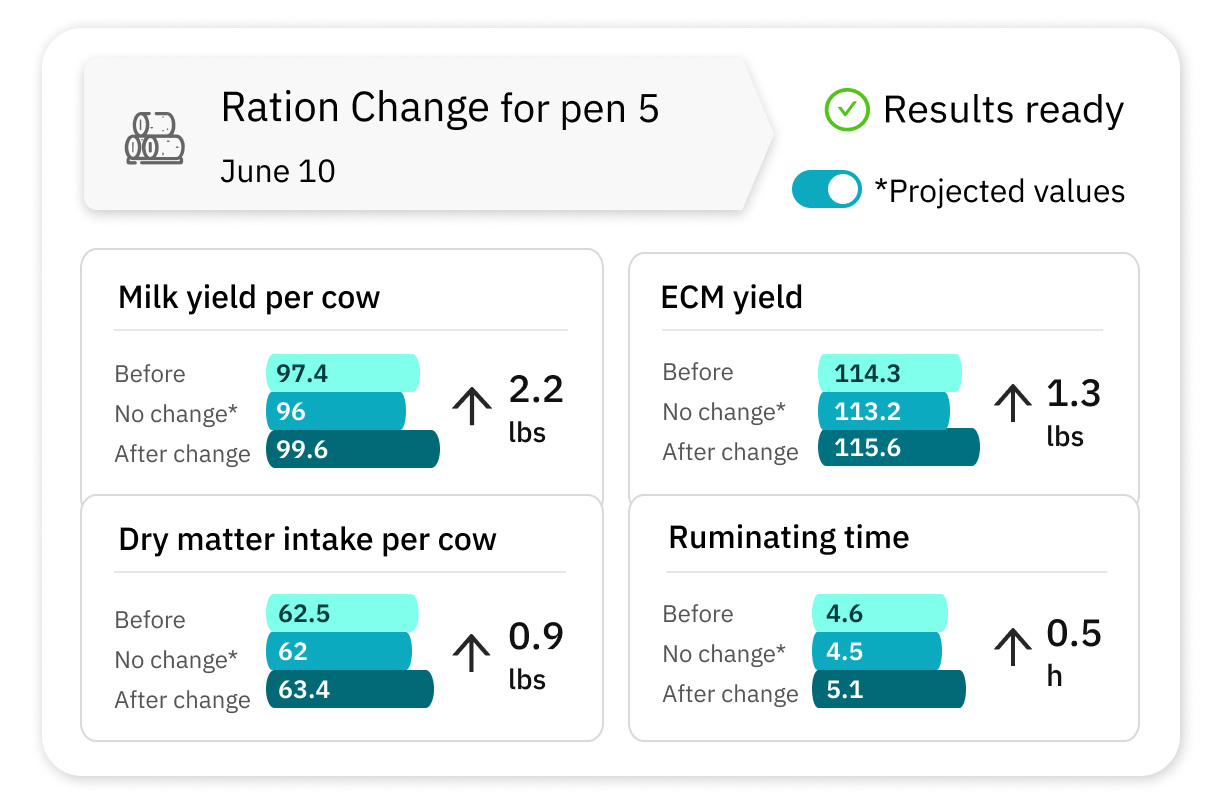Like humans, dairy cows are vulnerable to heat stress during the summer months. However, this is a problem because heat stress reduces milk production. Understanding how to manage heat stress effectively is essential to keep your dairy farm running smoothly.
How does heat stress impact dairy production?
Heat stress can impact your dairy cows in multiple ways. Here’s what you need to know:
- Decrease in milk production and quality: Heat stress increases somatic cell count and reduces the amount of fat and protein in milk. This leads to lower-quality milk with a shorter shelf life and reduced nutritional value.
- Lower reproductive performance: Heat stress can disrupt a dairy cow’s hormonal patterns, leading to reduced fertility and conception rates.
Monitor heat stress using Temperature-Humidity Index
To measure heat stress on your farm, you need to measure the Temperature-Humidity Index (THI). THI combines temperature and humidity into a single value to provide a clearer picture of the heat stress risk.
A THI that’s higher than 72 is enough to cause minor heat stress and lead to reduced feed intake in a cow. And as the THI rises, cows exhibit signs of heat stress, such as:
- Reduced feed intake and resulting nutrient deficiencies
- Decreased milk production
- Lower milkfat and protein levels
- Higher somatic cell count
- Fertility and other health issues
Monitor how summer weather is impacting the herd by keeping an eye on THI values. The Connecterra Platform integrates your farm data as well as weather data from weather stations within 30 miles of the farm. You can see THI and max THI values alongside your key metrics like milk yield, dry matter intake, health issues and more in easy-to-read charts, making it easy to measure impact.

How to mitigate heat stress using data
During hot weather, managing heat stress in dairy cows is essential for their health and productivity, as well as your farm’s profitability.
You can assess the impact of heat stress on key performance indicators using your on-farm systems. To make this easier, the Connecterra Platform allows you to visualize, compare and analyze all your farm data from all your systems in one place. By looking at indicators like milk yield, dry matter intake and energy-corrected milk (ECM) yield, you can make data-driven decisions to optimize production even in high temperatures.
There are a few approaches you can take to reduce heat stress.
Shade and cooling management
The easiest way to help heat-stressed cows is to provide adequate shade.
Provide ample shade and ventilation in barns and holding areas. Install fans, sprinklers or evaporative cooling systems to increase air movement and keep temperatures low. And ensure there are not too many cows in one area to prevent overcrowding, as this can lead to more heat buildup.
Monitor the THI and be ready to implement cooling strategies when it exceeds 72ºF. For example, sprinkling cows with water and using fans to evaporate the water promotes cooling. But make sure that cows are dry by the time they are milked.
Adjust rations and feeding
When cows eat less due to heat, it's important to adjust their feed and feeding schedules to maintain nutrient intake and production. Keep an eye on key metrics like dry matter intake, milk yield and energy-corrected milk yield to spot any changes in your cows' eating habits.
Water is very important, especially during hot weather, so it’s key to make sure fresh and cool water is always available. And it’s advised to feed cows during cooler parts of the day.
Regularly check milk production and solid components to ensure the new diet meets their nutritional needs. You can easily see the impact of your interventions on key metrics with Connecterra’s Impact tracker. For example, monitor for changes in dry matter intake, eating and ruminating time, milk yield and ECM yield after you make a ration change.

Don’t let heat stress hurt your summer milk production
It's essential to tackle heat stress in dairy cows to keep them healthy and your farm productive during the hot summer months. Monitor the Temperature-Humidity Index (THI) and use cooling methods like shade and fans to help your cows stay comfortable.
Streamline this process and easily monitor important KPIs with the Connecterra Platform. Our software automatically calculates THI, tracks key metrics and provides data-driven insights to optimize your herd's comfort and performance. We also help you with benchmarking. For example, you can see how heat stress impacts key metrics like somatic cell count on your farm compared to other farms in your area, helping you understand when you need to take action.
Start a free 60-day trial on the Connecterra Platform today and take a proactive approach to heat stress management for a thriving dairy operation.










